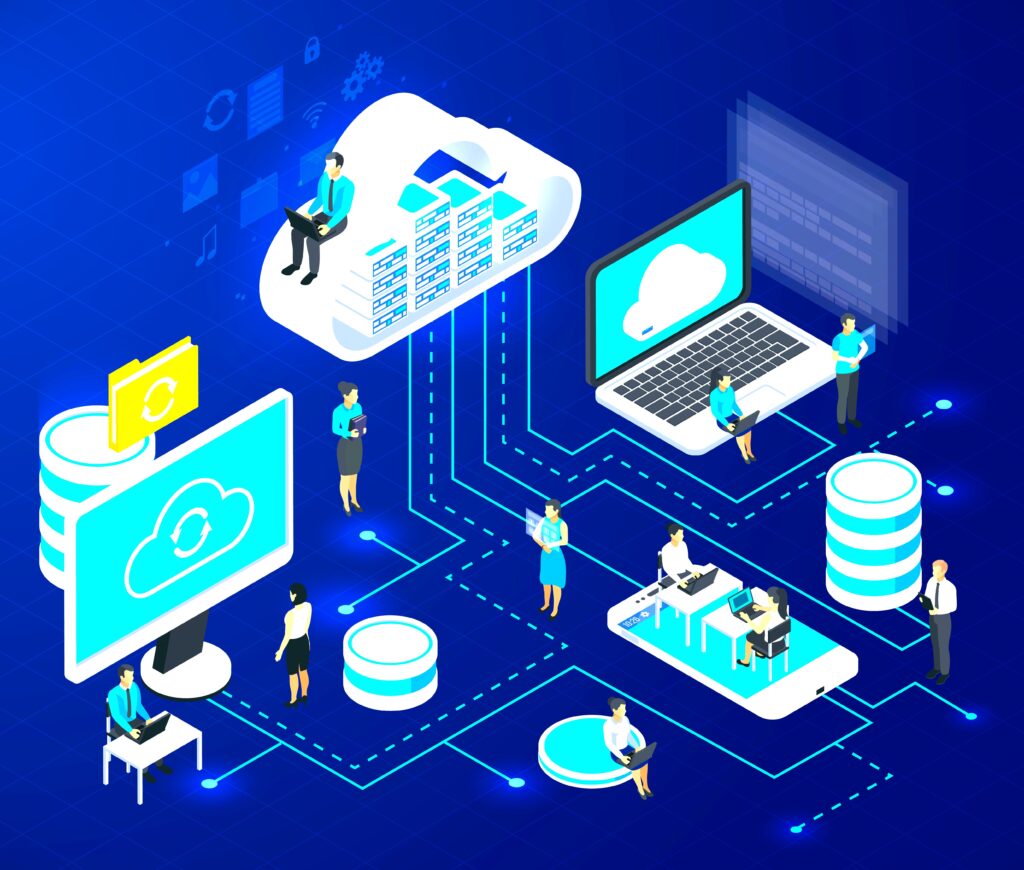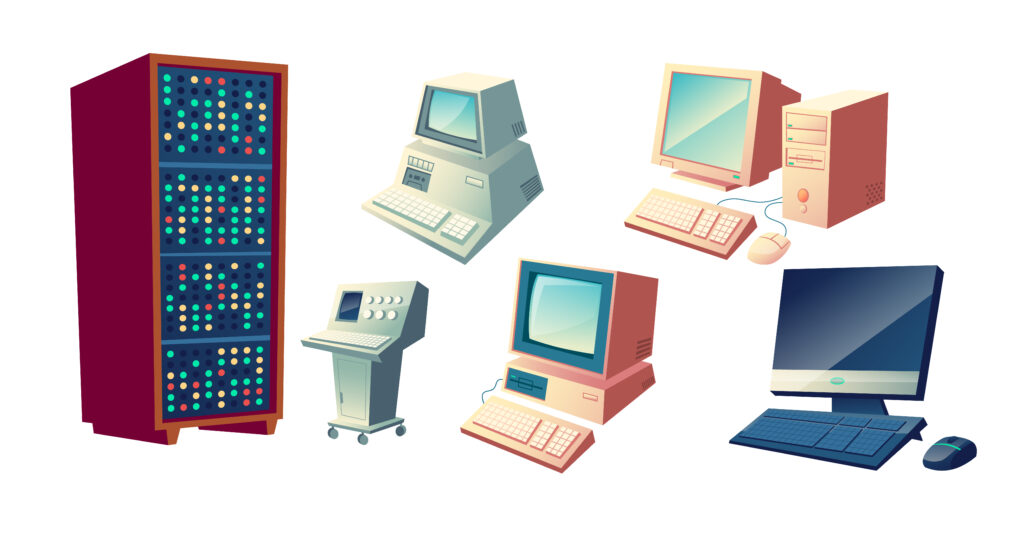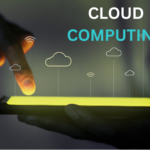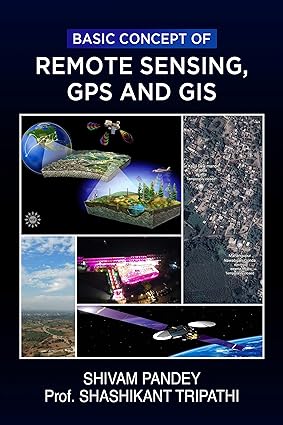In this article we will discuss how computers have evolved over different generations. The history of computer development is often considered with reference to the different generations of computer device. Each generation marked by advancements in technology, architecture and capabilities, resulting in increasingly smaller, cheaper and more powerful and more efficient and reliable devices. The first generation of computers started around 1940 and since then there have been five generations of computers till present. Here’s an overview of the evolution of computer-
Table of Contents

1. First Generation (1940s-1950s):
First generation computers also known as vacuum tube computer that uses vacuum tubes for logic circuitry. Vacuum tubes were expensive and produced a lot of heat, which made these computers very expensive and only affordable to large organizations and hence, they were primarily used for scientific and military purposes, performing calculations for tasks like ballistics, codebreaking and scientific research. These early computers were enormous, consuming vast amounts of space and energy compared to today’s devices and requiring specialized facilities for operation.
In first generation of computers assembly language was used to prepare programs. These were translated into machine level language for execution. In first generation computers Electostatics Memories were used and magnetic tape/magnetic drum were used as secondary memory. First generation computers had no graphical user interfaces or interactive displays. Users had to interact with the machines using complex input/output devices, such as punch cards or paper tape, which required specialized training, Examples of First Generation Computers Are- ENIAC ( Electronic Numerical Integrator And Calculator); EDVAC (Electronic Discrete Variable Automatic Computer); UNIVAC (Universal Automatic Computer); IBM701; IBM 650.
2. Secon Generation (1950s-1960s):
The second generation computers also known as Transistor Computer, which uses discrete transistors instead of vacuum tubes for processing. Transistors were smaller, more reliable and generated less heat then vacuum tubes, leading to a significant reduction in size and power consumption. This reduce in size made them more practical for commercial applications and contributed to their widespread adoption. Second generation computers featured faster processing speeds and improved performance compared to their predecessors. This increased speed enabled more complex calculations to be performed in less time, expanding the range of applications for which computers could be used.
Second generation computers introduced magnetic ferrite core memory as main memory, which was faster and more reliable then the drum memory used in first generation computers. Second generation computers saw the high level programing languages such as FORTRAN and COBOL. Example of first generation computers are- IBM 1620, IBM 7094, CDC 1604, UNIVAC 1108, Honeywell 400.
3. Third Generation (1960s-1970s):
The third generation computers used integrated circuit (IC)s also known as microchips, instead of transistors that was used in second generation computers. ICs combined multiple electronic components, such as transistors and resistors, onto a single semiconductor chip. This miniaturization drastically reduce the size of computer components and increased reliability while simultaneously decreasing production costs. Hence third generation computers were much smaller, more powerful and more affordable then previous generations. Third generation computers saw the development and widespread adoption of sophisticated operating systems, such as UNIX and IBM’s OS/360. In third generation computers storage devices offered larger capacities, faster access times and improved reliability.
Example of third generation computers are- Honewell-6000, PDP-8 mini computer, 360 Mainframe from IBM, UNIVAC 1108, ICL 2900.
4. Fourth Generation (1970s-1980s):
The most defining feature of fourth generation computers was the adoption of microprocessors. These integrated circuits contained the entire central processing unit (CPU) on a single chip, combining the functions of the arithmetic logic unit (ALU), control unit and memory management unit. Fourth generation computers saw the rise of personal computers, which became increasingly affordable and accessible to individual users. In this generation of computers Graphical User Interfaces (GUIs) was introduced, which replaced text based interfaces with visual elements such as windows, icons and menus. GUI’s made computers more intuitive and easier to use, leading to broader adoption among non-technical users.
Fourth generation computers facilitated the growthy of computer networking and communication technologies, enabling computers to connect and communicate with each other over Local Area Networks (LAN) and Wide Area Networks (WAN). Fourth generation computers introduced advancements in mass storage solutions, such as floppy disks, hard disks drives and optical storage media (e,g. CDs and DVDs) and also enabled the integration of multimedia capabilities including sound, graphics and video into computer applications, This generation of computers had the first supercomputers used complex programing languages like C, C++, DBASE etc and could perform many accurate calculations. Example of fourth generation computers are- Apple Macintosh, IBM 4341, Intel’s 8088, CRAY-X-MP (Super Computer).
5. Fifth Generation (1980s-present):
Fifth generation computers also known as modern computers, still in the development stage and are characterized by advancements in Artificial Intelligence (AI). By these they can learn from data, recognize patterns and make decision without explicit programming. Fifth generation computers enables Natural Language Processing (NLP) in which they can understand and interpret human language, including speech recognition, language translation and sentiment analysis. This allows for more natural interaction between humans and machines.
Fifth generation computers utilize parallel processing techniques, enabling them to perform multiple tasks simultaneously. Superconductors materials are used in fifth generation computers to achieve ultralow temperatures, reducing resistance and enabling faster processing speeds. Superconductors also play a role in quantum computing, which holds the potential for exponentially faster computation. These computers programming languages more effectively, allowing for more intuitive and efficient programming. Overall fifth generation computers aim to mimic human like intelligence and reasoning, revolutionizing fields such as healthcare, finance, transportation and more.
Conclusion:
The evolution of computers across generations showcases an extraordinary journey of innovation and progress, marked by significant advancements in technology, design, and functionality. From the early days of massive mainframes to the sleek and powerful devices of today, each generation has pushed the boundaries of what is possible, revolutionizing industries, shaping societies, and transforming the way we live and work.
the evolution of computers over different generations is a testament to human ingenuity and the relentless pursuit of progress. From room-sized behemoths to pocket-sized marvels, computers have evolved to become indispensable tools in every aspect of our lives, shaping the world in ways once thought impossible. As we look to the future, the only certainty is that the journey of innovation will continue, driving us ever forward into the boundless realms of possibility.
Frequently Asked Questions(FAQ):
In which generation microprocessor was developed?
What is microprocessor in computer?
What is Artificial Intelligence?
Common applications of Artificial Intelligence
Healthcare: AI is used for medical image analysis, disease diagnosis, drug discovery, personalized medicine, and patient monitoring.
Finance: AI is used for fraud detection, algorithmic trading, credit scoring, risk assessment, and customer service.
Transportation: AI is used in autonomous vehicles, traffic management systems, route optimization, and predictive maintenance.
Education: AI is used for personalized learning, intelligent tutoring systems, educational games, and adaptive assessment.
Entertainment: AI is used for content recommendation, video and audio analysis, virtual assistants, and gaming.
Tow types of Artificial Intelligence
General AI (Strong AI): General AI refers to AI systems that possess the ability to understand, learn, and apply knowledge across a wide range of tasks and contexts, similar to human intelligence. General AI, if achieved, would have the capacity to think, reason, and solve problems in diverse domains. However, true general AI is still largely a hypothetical concept and has not been realized yet.









